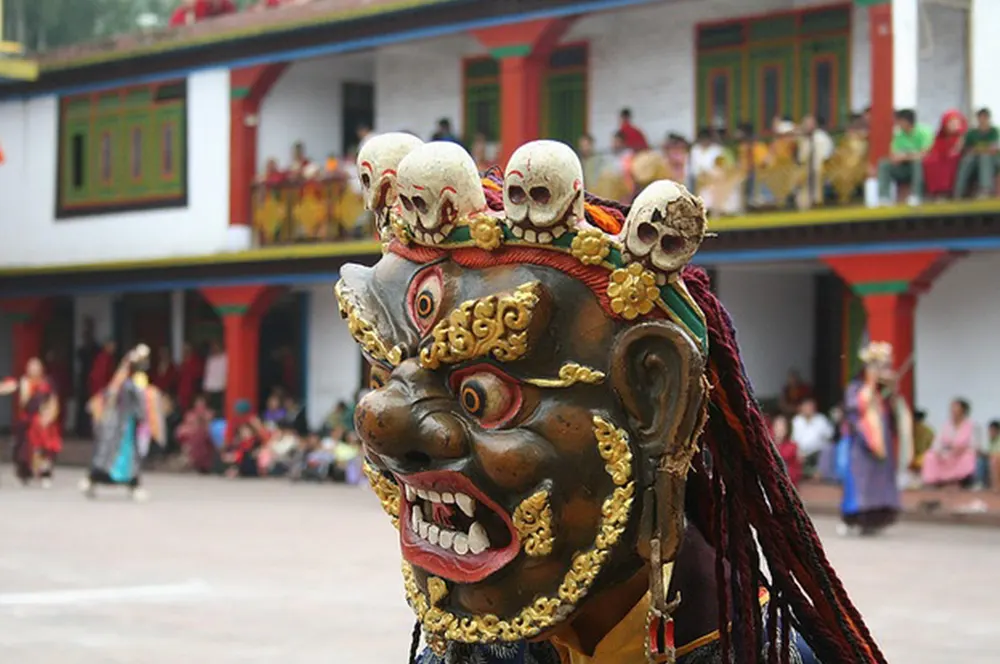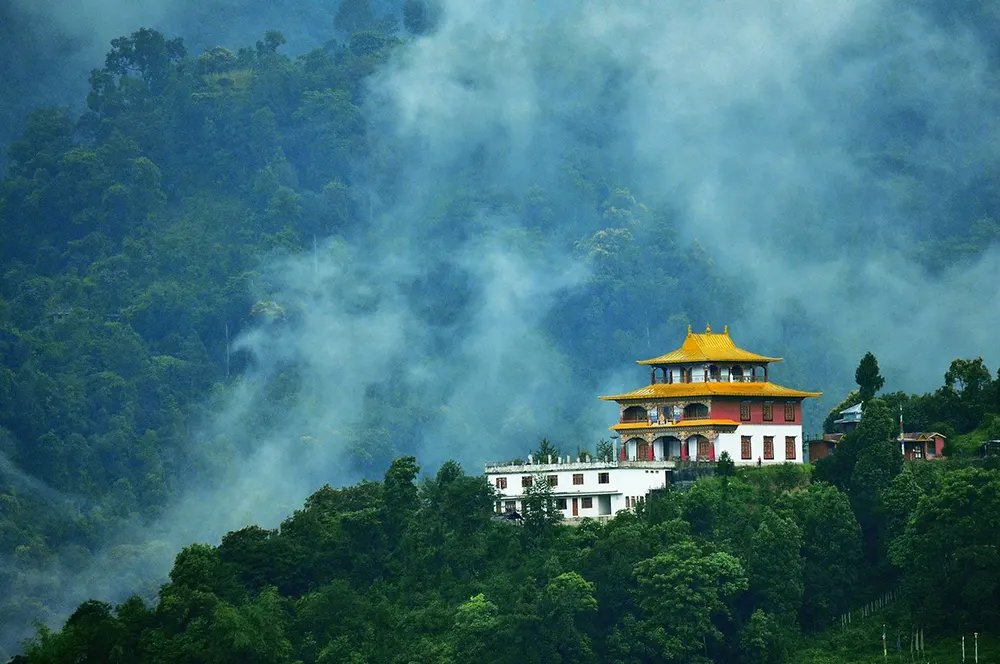Overview
The Rumtek Monastery, also known as the Dharma Chakra Centre, is a gompa in the Indian state of Sikkim, near to Gangtok. It is the seat of the Gyalwang Karmapa in exile, inaugurated in 1966 by the 16th Karmapa. It also acts as a focal point for the sectarian disagreements that characterise the 17th Karmapa issue within Tibetan Buddhism’s Karma Kagyu school.
The place is well-known among soul seekers looking for peace and quiet among the hills. You experience a profound sense of being one with the all-powerful or God when you arrive here. The tranquillity of the environment brings visitors to this magnificent site, where they find peace and harmony. Visitors are left breathless by the breathtaking views of the city and surrounds from the Monastery’s highest point. The monastery is roughly 24 kilometers from the capital city of Sikkim, Gangtok

It is the largest monastery in Sikkim, showcasing the best of Tibetan architecture as well as unique Buddhist art treasures. The monastery’s huge prayer hall is magnificently ornamented with stunning murals, sculptures, and old thankas (Buddhist paintings on fabric). There are also beautiful paintings of the Kargyu lineage and eight Bodhistavas. It is a world-class Kargyu training centre.
Architecture Rumtek Monastery
Rumtek Monastery in Sikkim is a wonderful work of art that is an exact duplicate of Tsurphu. This monastery was beautifully designed, with a three-story spectacular structure covered in paintings in Tibetan style and carved with a golden sculpture. Beautiful paintings and murals of the four guardian deities decorate the monastery’s entryway.
Thangkas, scrolls with magnificent hand paintings, and 1001 small golden Buddha models add to the magnificence of this shrine. Furthermore, this is the most well-known centre for the spread of Kagyu teachings in the globe.

This architectural marvel’s main building, which includes a monastery for monks, was built using principles from Tibetan monastic architecture. The ground floor of the main monastery building houses an elaborately decorated prayer hall with silk paintings, murals, and sculptures. Monk parishioners offer prayers in front of the Karmapa’s throne in this sacred space. Additionally, there is a patio and a little stupa on the top level.
There are statues of the Dalai Lama and Lord Ganesha at the monastery’s entryway. In the Buddhist school in the monastery, pupils are given instruction in Buddhist tradition and culture. The monastery’s claim to fame is the Golden stupa, which is located in the Karma Shri Nalanda Institute’s brand-new chamber. Quite similar architecture can be discovered at Enchey Monastery located near Gangtok.
Festivals in Rumtek Monastery
Losar, The 38-day Tibetan New Year festival is a time of intense cultural and celebratory celebration. Numerous Tibetan opera dance performances are also shown.
Vajrakillaya Drupchen, A day set aside to honour Guru Padmasambhava, one of Tibet’s most respected monks. It falls in the fifth lunar month of the Tibetan calendar.
Mahakala, Between February and March, a 10-day Protector practise called Mahakala is organised, which is followed with a traditional holy lama dance. Monks dressed in colourful robes dance to the rhythm of traditional instruments played by monks.

Dunddrub Puja, In April-May, monks recite lakhs of mantras in dedication to global peace celebrated as Dunddrub Puja.
Birthday of Ogyen Trinley Dorje, The Seventeenth Gyalwa Karmapa, Ogyen Trinley Dorje, is born on June 26th, and his birthday is lavishly commemorated on that day with a plethora of dances, cultural events, and rituals.
Monks’ Retreat – During July or August, the monks of Rumtek monastery embark on a 45-day retreat. Several ceremonies are conducted, and the Monks’ retreat culminates on Gakye.
Gutor – A lama dance called gutor, which is held prior to Losar and features performers wearing masks, is performed.
Best Time to visit: September and June
Best Visit Hours: 10 a.m. to 5 p.m. in the winter and 8 a.m. to 5 p.m. in the summer.
The Rumtek Monastery is best visited from September to June. The coldest temperature is approximately -2°C, while the maximum temperature is 16°C. The weather is lovely. This is the period of year when the location experiences warm to scorching summers. Visitors can also schedule a visit to this monastery during one of the many festivals hosted here throughout the year. One of the most important celebrations is Tibetan New Year, also known as Losar. Every year in February, it is celebrated for three days with much pomp and spectacle. A week-long Mahakal Puja is also conducted just before Losar.

This is also an excellent opportunity to partake in traditional Cham ceremonies. Dungdrub Puja is held in May or June to commemorate the enlightenment anniversary of Buddha. The 17th Karmapa’s birthday is commemorated each year on June 26th with a variety of cultural celebrations. Plan a journey to this monastery to see these
Things to consider while visiting:
There are several do’s and don’ts to be mindful of during your visit to the monument.
- Wear appropriate attire when visiting the monastery.
- Hire a guide to make your visit as easy and stress-free as possible.
- If you are tired from the long journey, you should eat something or enjoy a cup of tea at one of the stalls outside the monastery.
- Do not smoke or consume alcohol anywhere near or inside the monastery.
- Kora performance is required in order to pay your respects.
- Don’t mess with the idols.
- Avoid taking photos in the no camera zone.

How to reach the Monastery?
You may take a flight from Delhi to the Bagdogra Airport, then a taxi, to go to Gangtok. A tourist can take a two-wheeler or a car from Gangtok to the monastery’s close-by location and then go for a walk amid the picturesque hills. You can take help of Google map to discover the places around.

2 Comments
Comments are closed.